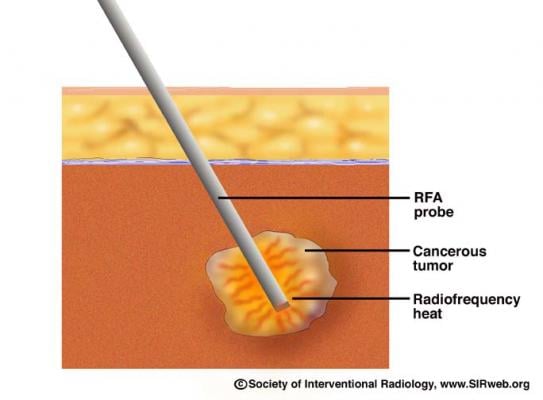
May 6, 2009 - A dedicated breast cool-tip RF ablation system can induce complete tumor necrosis and reproducible ablation volumes independently of breast glandular pattern, providing excellent cosmesis, according to a study by From the Department of Diagnostic and Molecular Imaging, Radiation Therapy and Interventional Radiology, General Surgery Division, and University Hospital Policlinico Tor Vergata, Rome, Italy.
Researchers Guglielmo Manenti, MD, PhD, et al, also concluded that postablation MR images are a reliable tool in predicting histologic findings.
The study’s objective was to evaluate in vivo the efficacy of a newly developed breast radiofrequency (RF) ablation system in human small invasive breast carcinomas in terms of induction of complete tumor necrosis, reproducibility of ablation lesion size and shape, and cosmetic outcome.
Clinical trials involved 34 postmenopausal women (mean age, 53 years ± 5 [standard deviation]; range, 49–62 years) with small (?2 cm) biopsy-proved invasive ductal breast carcinomas were enrolled. RF energy was delivered through a 25-mm 15-gauge monopolar cool-tip needle electrode by using the temperature-controlled mode. Patients were divided into three groups according to their breast pattern as assessed at mammography. The volumetric size and geometry of the coagulation zone, together with ablation time, were determined. Histopathologic data were compared with postprocedural 3.0-T contrast material–enhanced magnetic resonance (MR) images. Cosmesis after RF ablation was assessed. Four weeks after RF ablation, patients underwent definitive surgery.
The results shoed that all ablation procedures were performed successfully. For 97 percent of the procedures, nicotinamide adenine dinucleotide in its reduced form–diaphorase staining showed no evidence of viable cells. The mean induced ablation volume, as assessed with histologic analysis, was 12.50 cm3 ± 0.8. Tumor ablation volume on the postablation MR images showed good correlation with results of histopathologic analysis (r = 0.823, P .05 for both). The general shape of the induced necrosis was close to a sphere in all cases. Cosmesis was excellent in 28 patients.
Source: Radiology 2009;251:339-346
For more information: www.ptvonline.it

